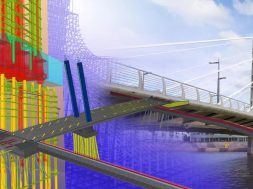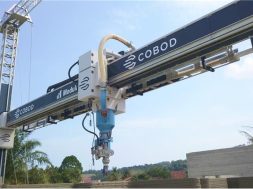Trimble solutions BrIM for bridge engineering

“BrIM is revolutionising the industry by combining digital representations throughout the life cycle of a bridge.” Harsh Pareek, Regional Sales Director, India and SAARC, Trimble Solution
Bridge engineering has long relied on paper-based procedures, typically hampered by poor communication and inefficiency. As technology advances, the introduction of Bridge Information Modelling (BrIM) has transformed how bridges are designed, built, and maintained.
BrIM is a technology-driven approach that generates a detailed digital model of a bridge, including its physical structure, materials, construction procedures, and maintenance plans. This digital depiction is not a static blueprint; rather, it is an interactive model that allows engineers, architects, contractors, and maintenance people to participate in real time. This collaborative platform marks a substantial departure from traditional paper-based operations in miscommunication and inefficiencies.
Key benefits of BrIM
One of the major advantages of BrIM is its potential to streamline procedures. A centralised digital architecture allows stakeholders to readily access and update information, lowering the risk of errors caused by out-of-date or misinterpreted data. This shared model serves as the single source of truth for the bridge project, ensuring everyone is on the same page. This level of synchronisation improves collaboration while reducing the likelihood of costly rework owing to misinterpretation.
BrIM also enables more detailed and precise design and analysis. The detailed 3D models generated by BrIM can accurately depict a bridge’s geometry, which is critical for structural study. Engineers may model different loading circumstances and evaluate how a bridge will perform, allowing them to spot potential problems before the building begins. This capacity also allows engineers to visually test multiple design choices, promoting a more data-driven design approach.
BrIM has an impact beyond the design process, including construction and maintenance. BrIM can automate construction activities such as material extraction and reinforcement scheduling. This automation saves time and minimises manual errors, increasing efficiency and productivity. Furthermore, the digital model can help optimise building schedules, lowering costs, and improving project timeframes.
In terms of maintenance, BrIM is a game changer. The digital model may include detailed information about a bridge’s components, materials, and inspection needs. This detailed information enables maintenance professionals to develop effective maintenance plans, prioritise jobs, and apply preventive measures to extend a bridge’s life. The ability to easily obtain this information improves maintainability and lowers the long-term expenses of bridge upkeep.
Challenges of implementing Bridge Information Modelling
However, adopting BrIM is not without its obstacles. The transition from paper-based to digital workflows demands a cultural shift among project stakeholders. Engineers and other workers must be trained to use BrIM efficiently, which entails not just learning new software but also adopting new ways of thinking. The scarcity of skilled BrIM workers also presents a challenge, necessitating the updating of curricula at educational institutions and further training for current specialists.
Interoperability across multiple software programmes is another difficulty. BrIM relies on seamless data transmission, but guaranteeing compatibility among multiple systems can be complex. The use of open standards and interoperable file formats is critical for addressing this issue. Furthermore, while the initial investment in BrIM software, hardware, and training may appear significant to certain businesses, the long-term advantages typically surpass the expenses.
The future of bridge engineering with BrIM
Bridge Information Modelling represents a paradigm leap in bridge engineering, ushering in a new era of greater collaboration, efficiency, and sustainability. As the technology evolves and the problems of adoption are overcome, BrIM is positioned to become a cornerstone of modern bridge engineering techniques.
Bridge engineering firms that use BrIM may provide outstanding bridges that are structurally solid, cost-effective, maintainable, and visually stunning. BrIM permits engineers to create bridges that are built to last, establishing a lasting legacy for years.
Bridge Information Modelling (BrIM) is a potent instrument for moving bridge engineering into the modern era. BrIM fosters superior cooperation, optimises operations, and facilitates data-driven decision-making by providing a central digital model that encompasses the whole bridge lifetime. While problems such as personnel development and software interoperability remain, the long-term benefits of BrIM—increased efficiency, lower costs, and better bridge performance—are clear. As the industry accepts this disruptive technology, BrIM has the potential to alter bridge design, building, and maintenance methods, opening the way for a future of more strong, sustainable, and aesthetically spectacular bridges.
For more information, visit: https://www.trimble.com/en
37
Cookie Consent
We use cookies to personalize your experience. By continuing to visit this website you agree to our Terms & Conditions, Privacy Policy and Cookie Policy.







